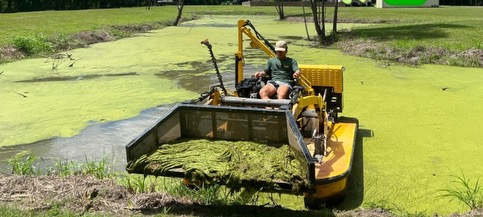Worst Water Weeds: Duckweed
Duckweed makes our list of worst water weeds because it can be a huge nuisance to ponds and other still water bodies. There are many different species of this flowering floating aquatic plant, most of which are native, but at least one of which is exotic. What they all have in common, however, is that with the right conditions, they can become incredibly invasive and wreak havoc on other native species. And yes, it also makes the list of 79 different invasive and exotic aquatic plants maintained by the Center for Invasive Species and Ecosystem Health. While ducks do love to feed on it, this water weed can rapidly outstrip the appetite of local waterfowl and take over a pond.
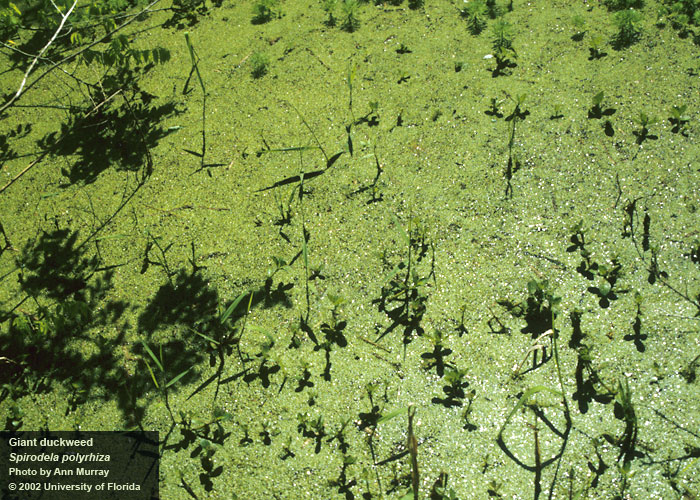
An infestation of giant duckweed
- Scientific Name: Lemna minor, Pirodela polyrhiza, Landoltia punctate (to name a few)
- Origins: The common and giant varieties are both natives to North America while the dotted variety (Landoltia punctate) was originally found in Australia and South Asia but escaped from cultivation and has been carried all around the world.
- Habitats: These tiny plants love nutrient-rich ponds and other still or extremely slow-moving bodies of water. If a pond has lots of dead organic matter at the bottom, this is what becomes a rich source of nutrients for duckweed. Surface runoff from agricultural operations can also result in a pond gaining more nutrients than it would normally have, making it vulnerable to an infestation.
- Eco-Impacts: This water weed can single-handedly ruin an otherwise healthy pond. When a relatively stagnant body of water becomes nutrient-saturated, duckweed takes off and can form a dense mat of vegetation on the water’s surface. It can rob the water of its oxygen, leading to fish die-offs, and can also crowd out other desirable native plant species such as sawgrass.
Correctly Identifying Duckweed
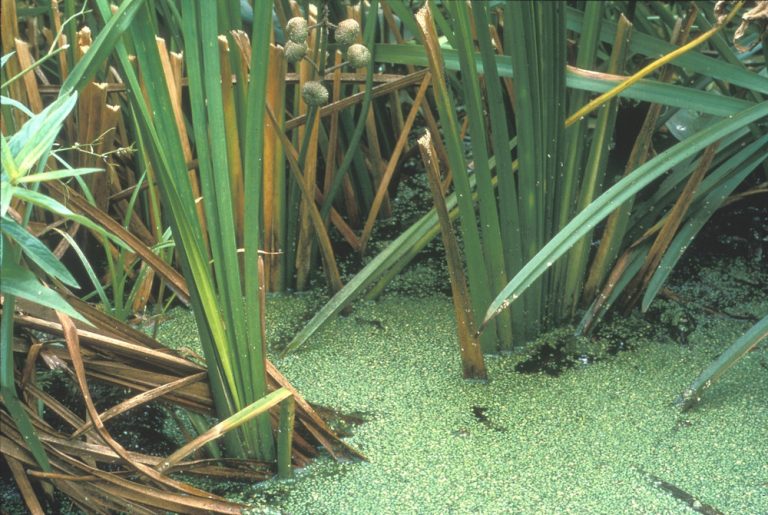
Common duckweed
Common duckweed (Lemna minor) is a floating freshwater aquatic plant featuring one, two or three leaves, with each having a single root hanging in the water. The plants can divide rapidly as more leaves grow and become separate individuals. The roots tend to be 1–2 centimeters long. The leaves are oval-shaped, typically 1–8 millimeters long and 0.6–5 millimeters wide, light green, usually with three (rarely five) veins and small air spaces for flotation assistance.
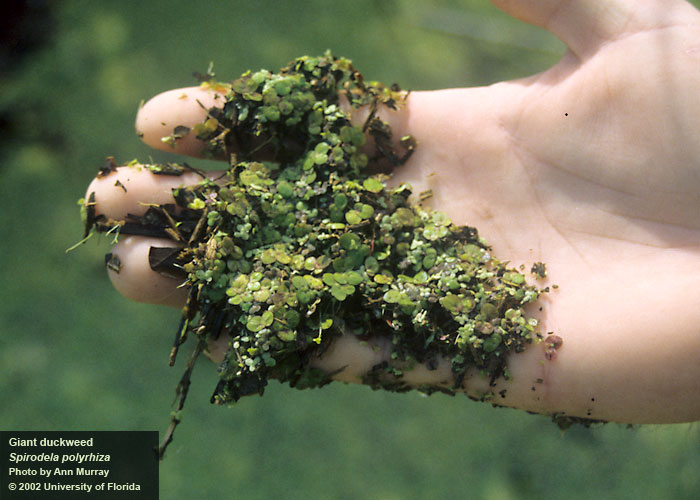
Giant duckweed
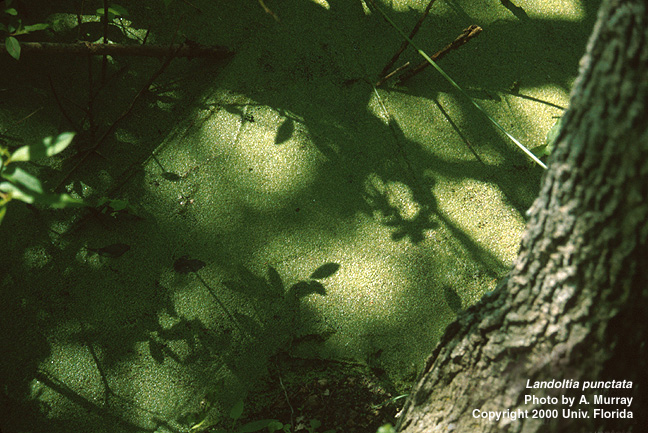
Dotted duckweed
Dotted duckweed (Landoltia punctate) is often confused with giant duckweed, but dotted duckweed is smaller, more shoe-shaped, and does not have a red dot on top. It typically features fewer roots (up to 4), and sometimes has a red margin on the underneath of the leaves. The “dotted” part of its name refers to barely perceptible raised dots on the surface of its leaves.
Duckweed Removal with Weedoo Environmental Work Boats
